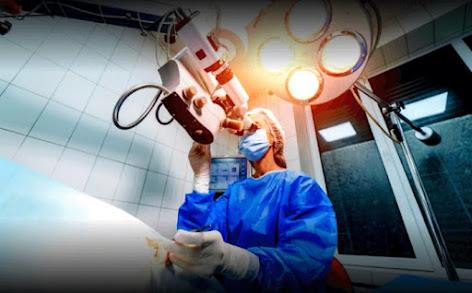Deep Brain Stimulation (DBS) Devices Market Global Opportunities, Revenue, Emerging Technologies 2022-2029
Deep
Brain Stimulation (DBS) devices are used to treat various neurological
conditions, including Parkinson's disease, essential tremor, dystonia, and
obsessive-compulsive disorder (OCD). These devices have been proven to be an
effective treatment option for individuals who do not respond well to
medication or other treatments. In this article, we will provide a
comprehensive guide to deep brain stimulation devices, including what they are,
how they work, the conditions they treat, the benefits and risks, and more.
What Are Deep Brain
Stimulation (DBS) Devices?
Deep Brain Stimulation (DBS) devices are small, surgically
implanted devices that send electrical impulses to specific areas of the brain.
These electrical impulses help regulate abnormal brain activity that causes
symptoms of neurological conditions.
DBS devices consist of three main components: a small,
programmable generator, a lead, and an extension. The generator is usually
implanted under the skin in the chest or abdomen, and the lead is implanted in
the brain. The extension connects the generator to the lead, allowing the
electrical impulses to be sent to the brain.
Request PDF Sample
Copy: https://www.fortunebusinessinsights.com/enquiry/request-sample-pdf/deep-brain-stimulation-dbs-devices-market-100559
How Do Deep Brain
Stimulation (DBS) Devices Work?
Deep Brain Stimulation (DBS) devices work by delivering
electrical impulses to specific areas of the brain that regulate abnormal brain
activity. The electrical impulses are delivered through the lead and the
generator, which are connected by the extension.
The generator is programmed by a healthcare professional to
deliver the appropriate amount of electrical stimulation to the brain. The
electrical stimulation can be adjusted as needed, depending on the patient's
response to the treatment.
Conditions Treated
with Deep Brain Stimulation (DBS) Devices
Deep Brain Stimulation (DBS) devices are used to treat
various neurological conditions, including:
- Parkinson's
Disease: DBS devices are commonly used to treat symptoms of Parkinson's
disease, including tremors, stiffness, and movement problems.
- Essential
Tremor: DBS devices are also used to treat essential tremor, which is a
neurological disorder that causes involuntary shaking.
- Dystonia:
DBS devices can also help alleviate symptoms of dystonia, which is a
neurological disorder that causes muscle contractions and twisting
movements.
- Obsessive-Compulsive
Disorder (OCD): DBS devices have been used to treat OCD, particularly in
cases where medication and therapy have not been effective.
Benefits of Deep
Brain Stimulation (DBS) Devices
There are several benefits of using Deep Brain Stimulation
(DBS) devices, including:
- Improved
Quality of Life: DBS devices can improve the quality of life for
individuals with neurological conditions by reducing symptoms and
improving function.
- Reduced
Medication Use: DBS devices can help reduce the need for medication, which
can have unwanted side effects.
- Reversible:
DBS devices can be turned off or removed if necessary.
- Adjustable:
The electrical stimulation can be adjusted to meet the patient's needs.
Risks of Deep Brain
Stimulation (DBS) Devices
While DBS devices are generally safe, there are some risks
associated with the procedure, including:
- Infection:
There is a risk of infection at the site of the surgery.
- Bleeding:
There is a risk of bleeding in the brain during the surgery.
- Hardware
Problems: The device can malfunction or break, requiring additional
surgery.
- Mood
Changes: Some patients may experience mood changes or depression as a
result of the procedure.
- Cognitive
Changes: Some patients may experience cognitive changes




Comments
Post a Comment